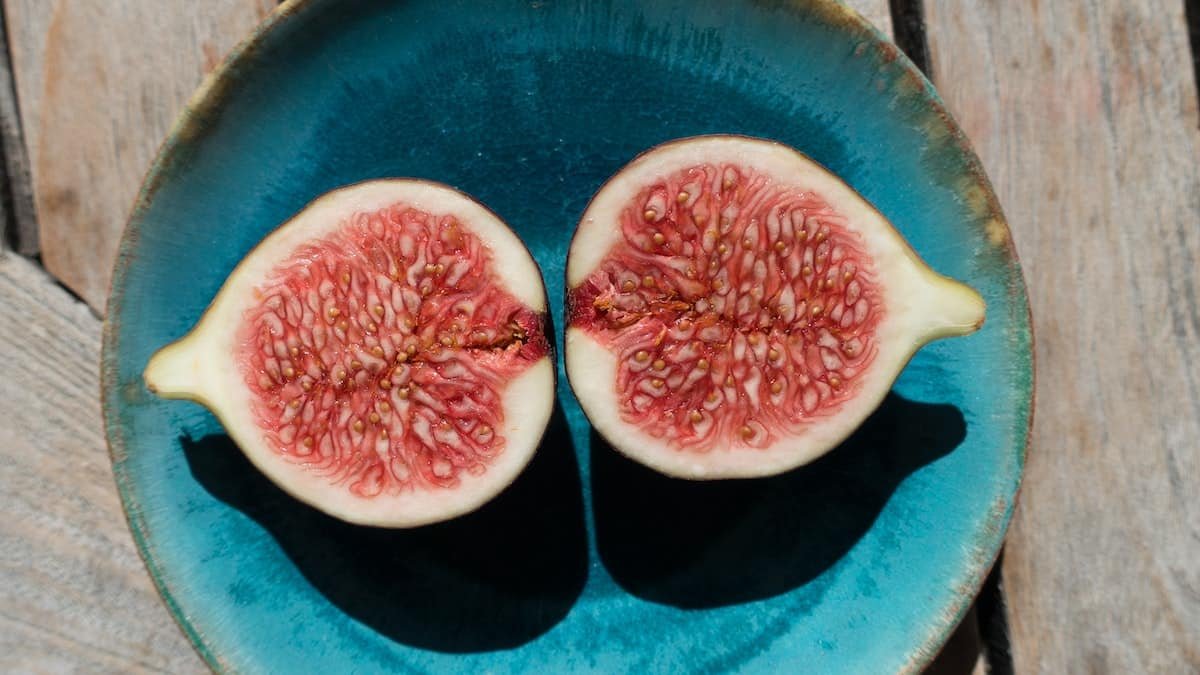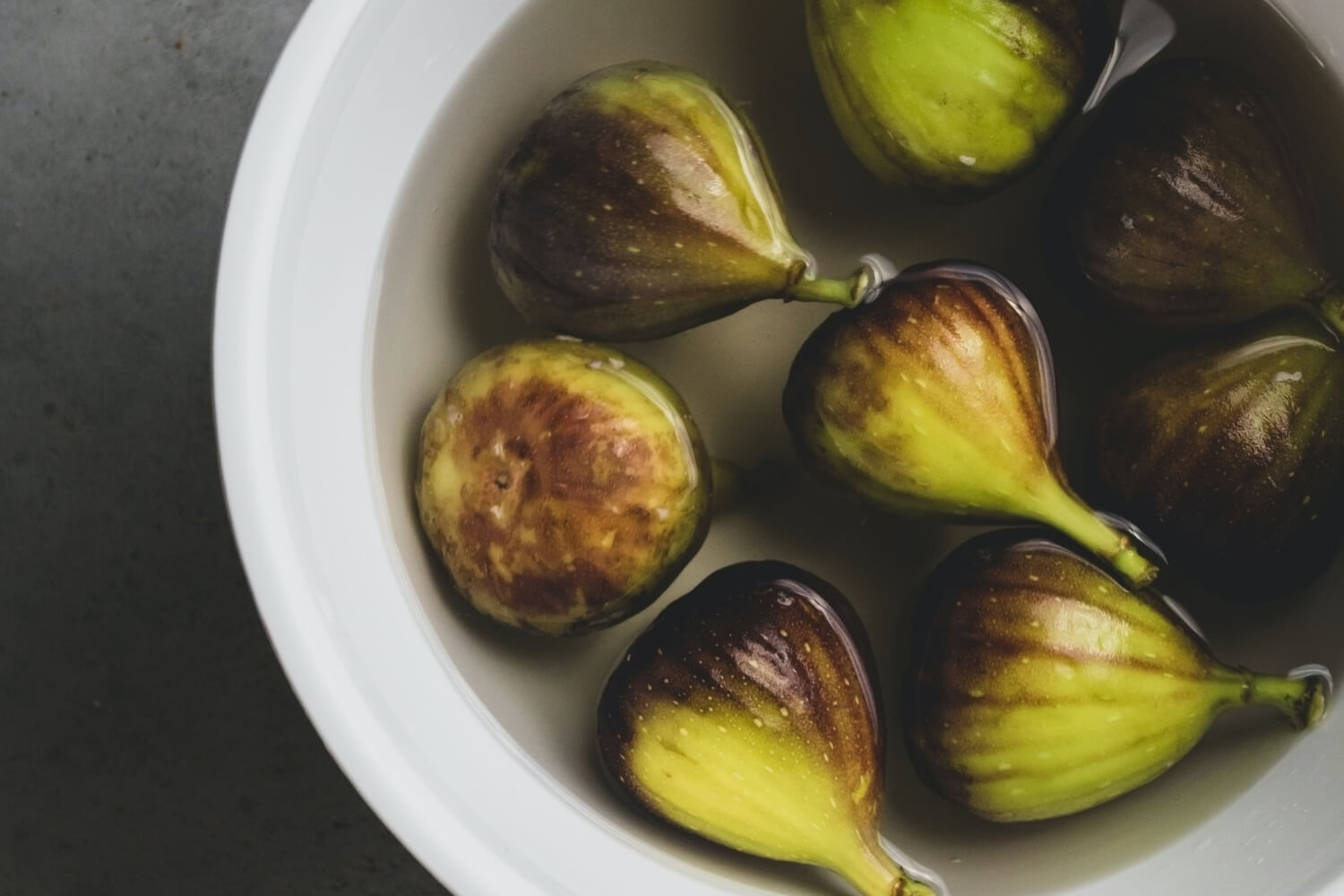Figs: Benefits, Nutrition, Side Effects

In this article we will be discussing the benefits of figs, their nutritional value and any potential side effects.
Figs are a fruit that have been enjoyed by humans for centuries. They are native to the Middle East and parts of Asia but are now grown in many other parts of the world. Figs are often eaten dried or fresh and can be used in a variety of dishes.
There are many different types of figs, but the most common are the black mission fig, the brown turkey fig and the calimyrna fig.
What are Figs
Figs are the fruit of the Ficus tree, which is part of the mulberry family. There are over 600 species of Ficus, but only a few produce fruit that is edible for humans. The most common type of fig tree is the Common Fig (Ficus carica), which is native to southwest Asia and the Mediterranean region.
The Common Fig tree can grow to be 10-30 feet tall and has large, lobed leaves. The fruit of the Common Fig tree is what we know as figs. Figs are actually a type of inflorescence, which is a cluster of flowers that have fused together. Each fig contains both male and female flowers, and they are pollinated by a tiny wasp that crawls inside the fruit to lay its eggs.
The skin of a fig can be smooth or prickly and is usually green, brown or black. The flesh of a fig is sweet and soft with a chewy texture. There are small, hard seeds in the center of the fruit. Figs are typically eaten fresh, dried or cooked.
Figs Benefits And Side Effects
Figs Benefits
The health benefits of figs are numerous. They are a good source of fiber and contain vitamins and minerals that are essential for good health. Figs are also a natural laxative and can help to regulate bowel movements.
Side Effects
Although figs are generally safe for most people to eat, there are a few potential side effects that should be considered.
KEY TAKEAWAY
Figs are a healthy and nutritious fruit that offer many health benefits. However, like with any food, they should be eaten in moderation to avoid potential side effects. Consult with your doctor before adding figs to your diet if you have any concerns.
How many figs to eat in a day?
You can eat up to three to five figs a day. More than that could lead to digestive problems like gas and bloating. If you’re allergic to latex, you should avoid eating figs altogether.
Keep in mind that dried figs contain more sugar than fresh figs. So, if you’re watching your sugar intake, it’s best to stick to fresh figs. You can also look for sugar-free dried figs at your local health food store.
Note that there isn’t an official number of figs to eat in a day. Some people’s gut might withstand eating more than 5 figs per day. As a general rule, it’s best to start with a smaller amount and see how your body reacts.
Benefits of figs soaked in water overnight
There are many benefits of consuming figs that were soaked in water overnight. The water helps to rehydrate the figs and makes them easier to digest. Soaking figs also helps to release their nutrients, making them more bioavailable to the body.
Here are 5 benefits of figs soaked in water overnight:
1. They are a good source of fiber: Soaking figs overnight helps to release their fiber content, which is beneficial for digestive health. Fiber helps to keep the digestive system clean and prevents constipation.
2. They can help regulate blood sugar levels: The soluble fiber in figs can help to regulate blood sugar levels by slowing down the absorption of sugar into the bloodstream. This is especially beneficial for people with diabetes.

3. They are a good source of antioxidants: Soaking figs overnight helps to release their antioxidant content, which can help to protect the body against damage from free radicals.
4. They can help lower cholesterol levels: The soluble fiber in figs can help to lower cholesterol levels by binding to cholesterol in the intestine and preventing its absorption.
5. They are a good source of essential nutrients: Soaking figs overnight helps to release their vitamins, minerals, and other essential nutrients, making them more bioavailable to the body.
Fig Water Recipe
Here’s an easy, 3-step recipe on how to add figs to water overnight.
Ingredients:
- 1 cup of water
- 1 fresh fig or 1 dried fig
- Honey (optional)
Instructions:
- Add the water and fig to a small bowl or jar.
- Cover and let soak overnight at room temperature.
- In the morning, remove the fig and add honey to taste (optional).
- Enjoy the fig water as is or use it in smoothies, oatmeal, or baking recipes.
Figs Nutrition Value vs Dried Figs Nutrition Value
Here’s a comparison table of the nutrition values between fresh figs and dried figs. (Figs nutrition facts 100g).
| Nutrients | Fresh Figs (100g) | Dried Figs (100g) |
|---|---|---|
| Calories | 74 Kcal | 249 Kcal |
| Protein | 0.7 g | 3.3 g |
| Carbohydrates | 19.2 g | 63.9 g |
| Vitamin A | 142 IU | 10.0 IU |
| Vitamin C | 2.0 mg | 1.2 mg |
| Vitamin D | – | – |
| Vitamin E | 0.1 mg | 0.4 mg |
| Vitamin K | 4.7 mcg | 15.6 mcg |
| Thiamin | 0.1 mg | 0.1 mg |
| Riboflavin | 0.1 mg | 0.1 mg |
| Niacin | 0.4 mg | 0.6 mg |
| Vitamin B6 | 0.1 mg | 0.1 mg |
| Folate | 6.0 mcg | 9.0 mcg |
| Vitamin B12 | – | – |
| Pantothenic Acid | 0.3 mg | 0.4 mg |
| Choline | 4.7 mg | 15.8mg |
| Calcium | 35 mg | 162 mg |
| Iron | 0.4 mg | 2.0 mg |
| Magnesium | 17.0 mg | 68.0 mg |
| Phosphorus | 14.0 mg | 67.0 mg |
| Potassium | 232 mg | 680 mg |
| Sodium | 1.0 mg | 10.0 mg |
| Zinc | 0.2 mg | 0.5 mg |
| Copper | 0.1 mg | 0.3 mg |
| Manganese | 0.1 mg | 0.5 mg |
| Selenium | 0.2 mcg | 0.6 mcg |
KEY TAKEAWAY
✅ If you are on a Keto Diet or low carbohydrates diet, it is best to consume fresh figs.
✅ Fresh figs have significantly less calories that dried figs. If you are on weight loss plan, consume fresh figs.
✅ Dried figs have more protein and more calories. If you are are hitting the gym for muscle building then its best to consumer dried figs.
✅ Dried figs have considerably more minerals than fresh figs.
✅ Fresh figs have considerably more Vitamin A than dried figs. On the other hand dried figs have considerably more Vitamin K and Vitamin E.
How to eat fig fruit
The best way to eat a fig fruit is to simply cut it in half and enjoy the sweetness of the flesh. Figs can be eaten fresh or dried, and they can also be used in baking recipes or turned into preserves.
If you don’t have a knife or don’t want to get your cutlery dirty, you can simply pinch with both hands the tip of the fig and open it – just like your are doing with commercial potato chip bags.
If you’re eating a fresh fig, make sure to wash it first to remove any dirt or pesticides. You can eat the skin of the fig, but some people prefer to peel it off.
If you’re eating a dried fig, make sure to rehydrate it first by soaking it in water for about 10 minutes. This will help to soften the skin and make the fig easier to chew.
There are many different ways to enjoy figs, so get creative and experiment with recipes.
People Also Ask (FAQ)
Bottom Line
Figs are a delicious, nutritious fruit that can be enjoyed in many different ways. They are a good source of fiber, antioxidants, and essential nutrients.
Plus, they can help regulate blood sugar levels, lower cholesterol levels, and promote digestive health. Just be sure to eat them in moderation if you have fructose intolerance.
Oh, by the way, if you found this article useful , don’t forget to share it with your friends and family!
